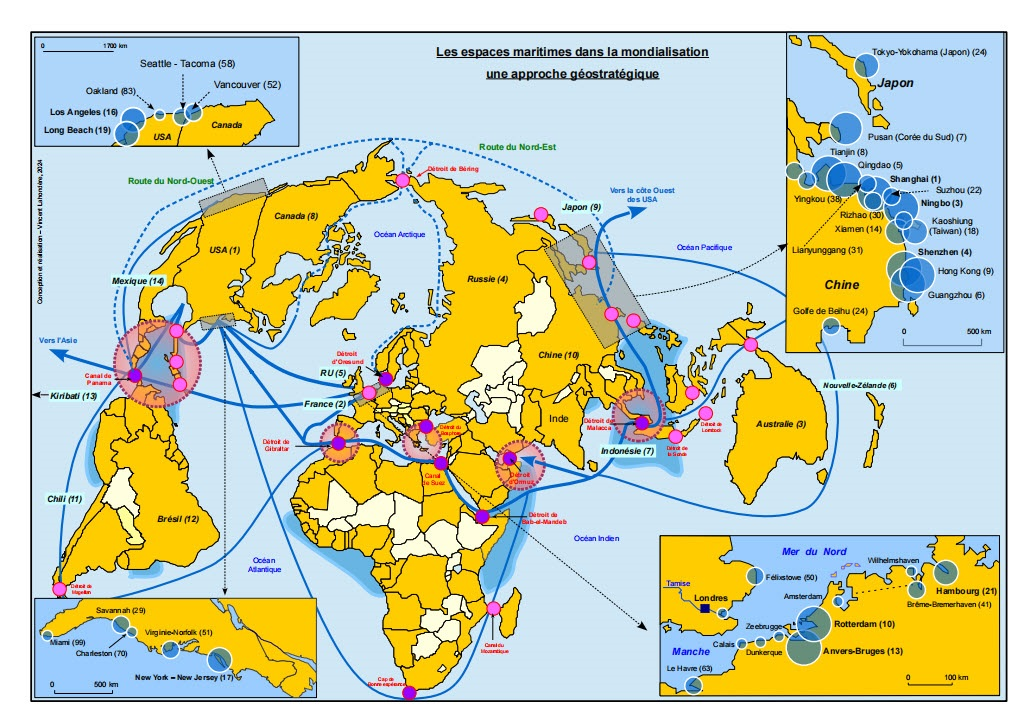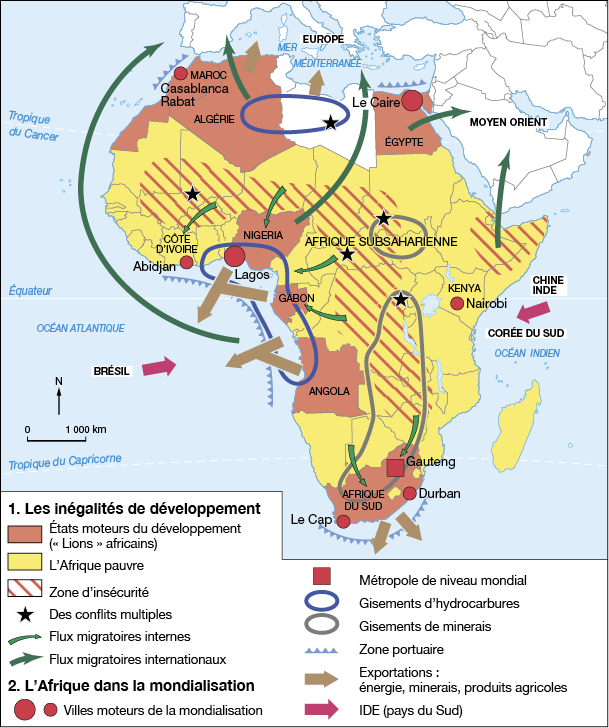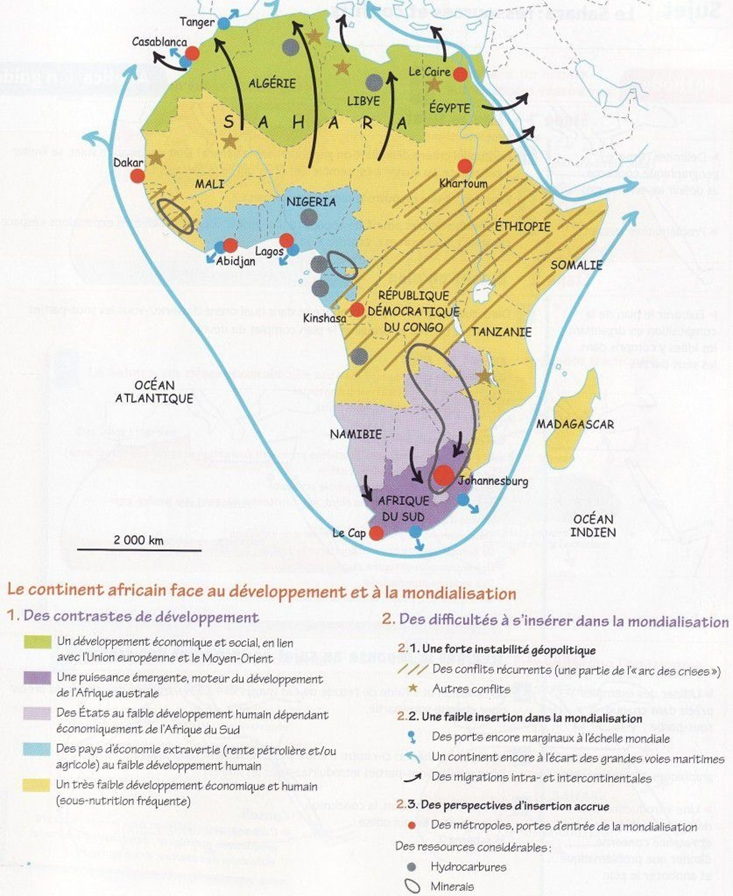Africa has always been part of economic globalization, particularly through its Mediterranean and eastern coastlines.
During antiquity, the powerful Egyptian civilization was, thanks to its geographical position at the junction between the Mediterranean world and Arabia, as well as to the Nile, through which goods transited, at the center of an important trade. Its cities were the bridgeheads of intercontinental trade. Subsequently, the Phoenician merchant cities established from the 1st millennium BC (foundation of Utica in 1100 BC, of Carthage around 814 BC) were the vectors of the economic integration of the continent in the first globalization; thus and for example, in the 5th century BC, the Carthaginians traded desert gold. A little later, defeated Carthage became a great city again, one of the first cities of the Roman Empire.
The Periplus of the Erythraean Sea, a travelogue dating from the 1st century, attests to intercontinental trade from an area extending from Egypt to Tanzania, towards the Arabian Peninsula, India, and the Mediterranean, and involving products such as ivory, spices, cinnamon, incense, styrax, lapis lazuli, topaz, turquoise, silk, indigo, not to mention slaves who ended up in India and China.
In the 3rd century, the kingdom of Aksum traded with several “countries” of the Indian Ocean and the Mediterranean. Trade, particularly in ivory, benefited the development of the kingdom through the creation of market towns. At the other end of the trade routes, the other part also prospered; in the first centuries of the Christian era, the kingdom of Awsan (present-day Yemen) owed its growth to trade with Africa. From the 7th century onwards, the Islamization of sub-Saharan Africa allowed it to integrate even more firmly into international trade, with the Arabs serving as intermediaries with the Western world.
From the year 1000, gold from Monomotapa left for India via Kilwa in whose ports cotton and glass beads were traded. The period corresponding to the European Middle Ages was the golden age of Africa with the great empires of Ghana, Mali, and Songhai. It was also the age of gold. Kanga Moussa, tenth mansa (king of kings) of the Mali empire in the first third of the 14th century, considered one of the richest men in the history of humanity, de facto controlled all trade in precious metal in the Mediterranean basin.
From the end of the 15th century, the continent experienced the Atlantic slave trade and then colonization in the 19th century, the most tragic forms of global integration. The deportations of slaves fueled the development of America and European countries and began their industrialization process, thanks to colonial resources. The volume of trade between Africa and Europe increased tenfold between 1820 and 1850.
After independence, however, Africa did not take the turn towards industrialization. The share of value in its economy and trade mechanically decreased in exchanges in the face of productions incorporating more added value.
At present, the continent’s place in world trade is minimal, around 3% in value, and it represents only 1.6% of world GDP (4.5% in purchasing power parity).
The continent is therefore often presented as “peripheral” or “on the margins.” However, it is also considered as globally (even historically) marginalized while the study of the long term shows evidence of the opposite.
The Organization of African Unity (OAU), created after independence in 1963, became the African Union (AU) in 2002 and brings together all African countries. It is the largest body on the entire continent. It is essentially a political body aimed at promoting cooperation between states.
At a more limited level, regional integration is considered one of the keys to the continent’s economic development. To this end, the continent has, since the 1970s, set up various regional institutions with an integrative vocation (ECOWAS, UMA, UEMOA, SADC, ECCAS, EAC, IGAD for the most important): customs unions, common market, free trade zones, etc. Essentially focused on economic action, these institutions have also, later, taken on a political and diplomatic dimension by contributing in particular to conflict resolution; thus, ECOMOG, under the aegis of ECOWAS, is a regional interposition force similar to the UN blue helmets.
Integration is, however, very late; intra-African trade represents only 10% of exchanges and is polarized around a few countries (South Africa, Ivory Coast, Nigeria, Kenya, Zimbabwe, and Ghana) and concerns a third of oil, knowing that, moreover, informal exchanges create de facto free trade zones.
For more information :
- https://fr.wikipedia.org/wiki/Portail:Afrique
- https://en.wikipedia.org/wiki/Africa
- https://africacenter.org/
- https://journals.openedition.org/etudesafricaines/
- https://etudes-africaines.cnrs.fr/
- https://journals.openedition.org/etudesafricaines/
- https://www.afdb.org/fr/documents-publications/economic-perspectives-en-afrique-2024




